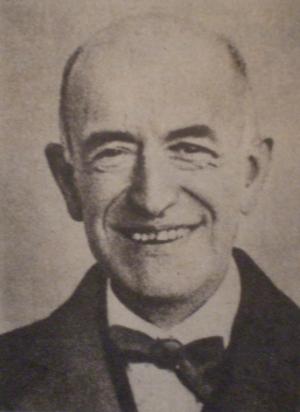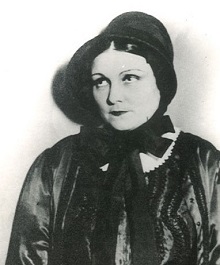
Manuel de Falla y Matheu was a Spanish composer and pianist. Along with Isaac Albéniz, Francisco Tárrega, and Enrique Granados, he was one of Spain's most important musicians of the first half of the 20th century. He has a claim to being Spain's greatest composer of the 20th century, although the number of pieces he composed was relatively modest.

Pedro Antonio de Alarcón y Ariza was a nineteenth-century Spanish novelist, known best for his novel El sombrero de tres picos (1874), an adaptation of popular traditions which provides a description of village life in Alarcón's native region of Andalusia. It was the basis for Hugo Wolf's opera Der Corregidor (1897); for Riccardo Zandonai's opera La farsa amorosa (1933); and Manuel de Falla's ballet The Three-Cornered Hat (1919).

La vida breve is an opera in two acts and four scenes by Manuel de Falla to an original Spanish libretto by Carlos Fernández-Shaw. Local (Andalusian) dialect is used. It was written between August 1904 and March 1905, but not produced until 1913. The first performance was given at the Casino Municipal in Nice on 1 April 1913. Paris and Madrid performances followed, later in 1913 and in 1914 respectively. Claude Debussy played a major role in influencing Falla to transform it from the number opera it was at its Nice premiere to an opera with a more continuous musical texture and more mature orchestration. This revision was first heard at the Paris premiere at the Opéra-Comique in December 1913, and is the standard version.

The Three-Cornered Hat is a ballet choreographed by Léonide Massine to music by Manuel de Falla. It was commissioned by Sergei Diaghilev and premiered in 1919. It is not only a ballet with Spanish setting but one that also employs the techniques of Spanish dance instead of classical ballet.

Adina is an operatic farsa in one act by Gioachino Rossini with a libretto by Marchese Gherardo Bevilacqua-Aldobrandini. The opera develops the popular theme of the "abduction from the seraglio". The première took place on 22 June 1826 at the Teatro Nacional de São Carlos, Lisbon.

El Concurso del Cante Jondo was a fiesta of flamenco arts, music, song, and dance, held in Granada in 1922. Conceived and initiated by composer Manuel de Falla, it enjoyed early and strong support from the poet Federico García Lorca. The two-day evening event was held outdoors at the Alhambra. The show included the best of well-known flamenco artists, but the contest's prize money was reserved for amateur performers.
Alessio De Paolis was an Italian operatic tenor who specialized in character roles. He was a prominent member of the Metropolitan Opera in New York City where he sang from 1938 to 1964. At the Met De Paolis performed 51 different roles, primarily in the Italian and French repertoires, in a remarkable 1555 performances. In 1931, De Paolis created the role of Monsieur Le Beau in Ermanno Wolf-Ferrari's opera La vedova scaltra; in 1933 that of Frulla in Riccardo Zandonai's opera La farsa amorosa; and in 1936 and that of Christian in Franco Alfano's Cyrano de Bergerac.
Gennaro Astarita was an Italian composer, mainly of operas. The place of his birth is unknown, although he was active in Naples for many years. He began his operatic career in 1765, collaborating with Niccolò Piccinni in the writing of the opera L'orfana insidiata. He became the maestro di cappella in Naples in 1770.

Los amores de la Inés is a zarzuela in one act, two scenes, composed by Manuel de Falla in collaboration with Amadeu Vives. The work uses a Spanish language libretto by Emilio Dugi and the music is organized into a prelude and five musical sections.

Paco de Lucía interpreta a Manuel de Falla is the twelfth studio album by the Spanish composer and guitarist Paco de Lucía. All the pieces were written by Manuel de Falla.

Teatro Grattacielo is a professional opera company based in New York City specializing in concert performances of rarely heard verismo operas. The company's past performances have included the North American premieres of Mascagni's Il piccolo Marat and Riccardo Zandonai's I cavalieri di Ekebù and La farsa amorosa. Its name means "Skyscraper Theatre" in Italian, a reference not only to the New York skyline but also to the Teatro Grattacielo in Genoa, a cinema which was the city's temporary opera house while the Teatro Carlo Felice was rebuilt after extensive damage in World War II.

Conchita is an opera in four acts and six scenes by composer Riccardo Zandonai. The work uses an Italian language libretto by Maurizio Vaucaire and Carlo Zangarini which is based on Pierre Louÿs's 1898 novel La Femme et le pantin. The work premièred in Milan at the Teatro dal Verme on 14 October 1911 with soprano Tarquinia Tarquini, who later married Zandonai in 1917, in the title role. Her portrayal was lauded by critics and she went on to perform Conchita at the Royal Opera, London (1912), the Cort Theatre in San Francisco (1912), the Philharmonic Auditorium in Hollywood (1912), the Heilig Theatre in Portland (1912), the Metropolitan Opera House in Philadelphia (1912), the Chicago Grand Opera Company (1913), and the Teatro di San Carlo in Naples (1913). The opera was published by G. Ricordi & Co in 1912.

Manuel del Pópulo Vicente Rodriguez García was a Spanish opera singer, composer, impresario, and singing teacher. He is often credited as a key figure in the development of modern vocal technique and vocal pedagogy.

Simone Berthe Ballard was a French operatic mezzo-soprano and contralto who sang leading parts, including premieres, at La Monnaie in Brussels.

Maria Carbone was an Italian operatic soprano. She created the lead female roles in two of Gian Francesco Malipiero's operas: the title role in Ecuba and Cleopatra in Antonio e Cleopatra.
This is a summary of 1919 in music in the United Kingdom.

The Three-Cornered Hat is a novel written by Pedro Antonio de Alarcón in 1874. The piece should be classified as a short story and it contains popular tradition with a linear plot line. The novel has a theatrical format and it has been compared with the Miguel de Cervantes novel Don Quijote.

The Three-Cornered Hat is a 42-minute classical studio album in which the Pittsburgh Symphony Orchestra under André Previn perform the whole of Manuel de Falla's ballet The Three-Cornered Hat and, as a filler, the Ritual Fire Dance from his ballet Love the Magician. The longer work's two brief vocal passages are sung by the American mezzo-soprano Frederica von Stade. The album was released in 1983.
Pedro de Freitas Branco (1896–1963) was a Portuguese conductor and composer.











